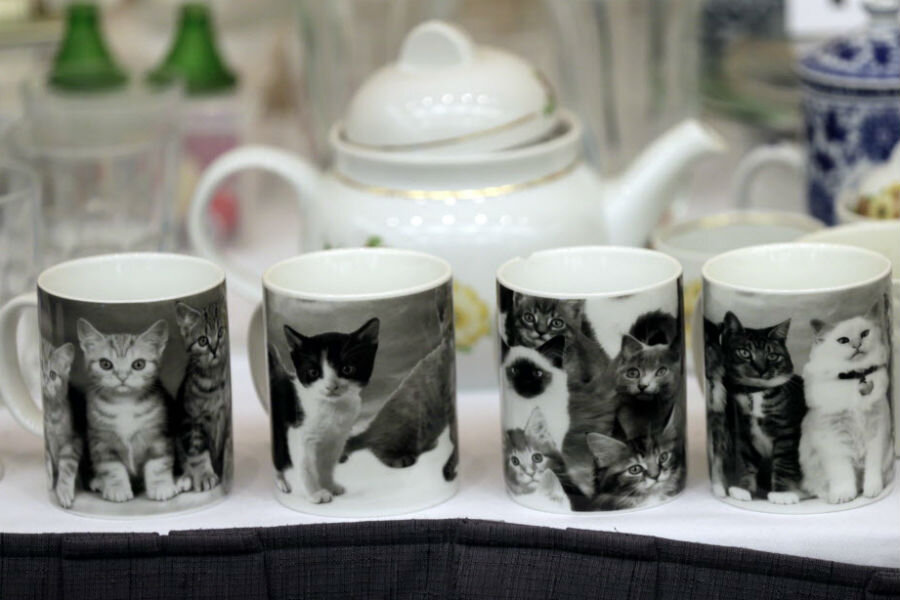How cat pictures gave Whitey Bulger's victims some restitution
Loading...
Cat mugs, a Stanley Cup replica ring, and a boxing dummy wearing a safari hat were just a few of the 100+ items sold Saturday at an auction of James "Whitey" Bulger's belongings.
The auction, held at the Boston Convention and Exhibition Center in Boston, Mass., aimed to raise money for the families of 20 people murdered by the infamous crime boss and his crew, as well as three Bulger extortion victims. The items auctioned off were recovered in the apartment Mr. Bulger shared with girlfriend Catherine Greig in Santa Monica, Calif., at the time of his arrest in 2011.
Also found were 30 guns and a memoir that Bulger had been in the midst of writing, neither of which were put up for sale at the auction.
A total of $109,295 was raised Saturday as bidders competed for a chance to own personal items of varying worth, ranging from a pair of slippers to a pencil holder shaped like a rat to a gold diamond claddagh ring, which fetched the highest price at $23,000. After auction and storage costs are deducted, all proceeds – along with $822,000 found in the walls of the Santa Monica apartment – will go to Bulger's victims and their families.
"We can’t bring back the victims," said Thomas J. Abernathy III, assistant chief inspector of the asset forfeiture division of the United States Marshals Service, which held the auction, to The New York Times. "This is better than destroying the property, and it’s some compensation for the victims."
Some of the buyers hailed from South Boston, Bulger's old neighborhood, and cited nostalgic reasons for their purchases; others simply wanted to help out the victims and their families. One friend of Ms. Greig's twin sister bought framed photos of Bulger and Greig's pets, with the intent to return them to Greig after she is released from prison in 2020.
The event drew criticism from some who said that the auction glamorized Whitey Bulger and his crimes.
"It sickens me to think, you know, the people and the hype on this," Steve Davis, who maintains that his sister Debra was strangled by Bulger although the jury in Bulger's 2013 trial reached no conclusion on that charge, told NPR prior to the auction.
"I wish they'd put it to rest," he said. "They should have just destroyed everything. By the time I get a check ... it's probably not even dinner money."
Despite his reservations, Mr. Davis attended the auction and even bid on several items in an attempt to boost their price.
"All the damage has been done," he later told the Times. "All the families can do now is get financial help."
Bulger, who is now 86, was sentenced in 2013 to two life terms plus five years after a jury found him guilty on more than 30 charges, including federal racketeering, extortion, and complicity in 19 murders.
"This certainly isn’t going to make [the families of Bulger's victims] whole," Massachusetts US Attorney Carmen Ortiz told CNN affiliate WFXT. "Nothing that we do is going to make them whole, but we’re hoping … it helps to heal a little bit of what they had to go through."








